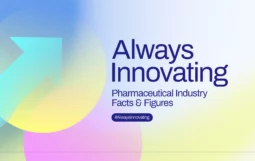Today Visionary, Tomorrow Down to Business: Health and the Sustainable Development Goals
This blog was originally posted on OECD Insights.
As our heads of state prepare to meet later this month in New York at the United Nations General Assembly (UNGA) to adopt the Sustainable Development Goals (SDGs), including the vision of Universal Health Coverage, I will allow myself a moment to appreciate the magnitude of the promise we are making to future generations.
The adoption of the SDGs gives governments and those of us involved in the health community a chance to embrace a vision as fundamental as the Declaration of Human Rights when it was adopted by the UNGA in 1948. It is one of the few occasions where we are not over-dramatizing the point – the next generation will judge us on whether we measured up to the challenge.
I am sure many of us will feel the magnitude of this moment. However, I am also in no doubt that after the meeting we will have to roll up our sleeves and get down to work. From the innovative pharmaceutical industry’s perspective, we are in a good shape to lead the way in some areas; in others we will need to get stuck-in and work through the difficult questions in partnership with others.
Valuable lessons from the legacy of the MDGs
Since the launch of the Millennium Development Goals (MDGs) in 2000, those of us working in global health have learned a lot.
We have learned it is possible for the world to come together in the pursuit of shared goals for a common good. Our sector has a considerable track record in this area but though we can measure up with the best of them (Ref UN Global Compact), we won’t be able to rest on our laurels.
We have learned that just in fifteen years we can halve the global deaths attributed to some of the world’s biggest killers such as TB or malaria. However, with chronic diseases increasingly threatening low- and middle-income countries, these advances may be short-lived. We need new strategies in face of the influx of these chronic, and to a large extent preventable, diseases. And so, in addition to discovering and researching new treatments, innovative pharmaceutical companies are looking to creative ways of leveraging the knowledge and expertise of local governments, industry and civil society, using new technologies to reach the greatest amount of people possible.
A great example is Be He@lthy, Be Mobile, a multi-sectoral partnership we’re contributing to that uses mobile phones to tackle chronic diseases, spearheaded by the International Telecommunications Union and WHO, and supported by NGOs, the private sector and the African and Asian development banks.
Lastly, with the Ebola outbreak, we have very recently learned what it means to be unprepared, to come up short in the face of a crisis and see health systems collapse under pressure, and how quickly the repercussions can be felt around the world. While our pipelines are yielding new treatments and vaccines to contain this disease, we are reminded once again of the importance of resilient health systems in face of future epidemics. This is where the powerful concept of Universal Health Coverage comes in.
Universal Health Coverage at the heart of sustainable development
Universal Health Coverage (UHC) lays at the core of the SDG for health, promising all the right to basic health care without financial hardship. UHC means a parent living in a rural India can reliably provide insulin for their child living with diabetes, it means a woman in Colombia will be screened for breast cancer so she can begin treatment before it is too late, it means a health center in Guinea that receives a patient infected with Ebola virus has the capacity to prevent further transmission in the community and to its health care workers. It means more than access to medicines alone.
With 400 million people lacking access to basic health care and many millions more lacking regular access to essential medicines, no one would say guaranteeing health as a right for all is an easy feat. To promote a mission as grand as UHC, we will likely find ourselves in partnerships that move beyond the vision of the SDG for health and the global health community, also tackling challenges around water and sanitation, urban living, education and climate change through convening fora such as the United Nations Global Compact.
As such, it is no accident that the 17th goal of the SDGs is one dedicated entirely to the promotion of partnerships. Whereas partnerships in the health sector are by no means a new phenomenon, partnerships looking forward will be characterized not only by their ability to sustainably serve the needs of populations, but also by an increased linking up of diverse sectors. As stated by the OECD in its 2015 Development Co-operation Report, “with the growing diversity of partners involved in development co-operation, it is more important than ever to avoid duplication of effort and fragmentation.”
Excellent examples of multi-sectoral partnerships already underway include GAVI, a global vaccine alliance between public, private and civil society sectors which has delivered 500million vaccines to children over 15 years; 4 Healthy Habits, an initiative between the pharmaceutical industry and the International Federation of Red Cross and Red Crescent Societies (IFRC) to promote healthy behaviours at community-level and fight chronic diseases; and the Global Health Innovative Technology (GHIT) Fund, a partnership between the government of Japan, the Bill and Melinda Gates Foundation and the Japanese pharmaceutical industry to research and develop new medicines to combat infectious tropical diseases. As the common thread throughout, the pharmaceutical industry supports efforts towards UHC. In 2014, we identified a set of guiding principles in the areas we believe our industry can contribute, and with the adoption of the SDGs we are galvanized. The SDGs will require pooling resources, expertise and working together across sectors as well as with governments and civil society like never before; luckily, we are not starting from scratch.
There is increasing recognition that providing quality health coverage is a key contributor to the wealth and economic productivity of countries. As I look ahead to this next generation of targets, I am confident that though challenges remain, we are well placed to rise to the occasion. Achieving these new goals and closing the gaps in health coverage will take commitment and creative thinking, as well as cross-sectoral partnerships, and this is enthusiastically welcomed by myself and my colleagues in this industry.
Author





